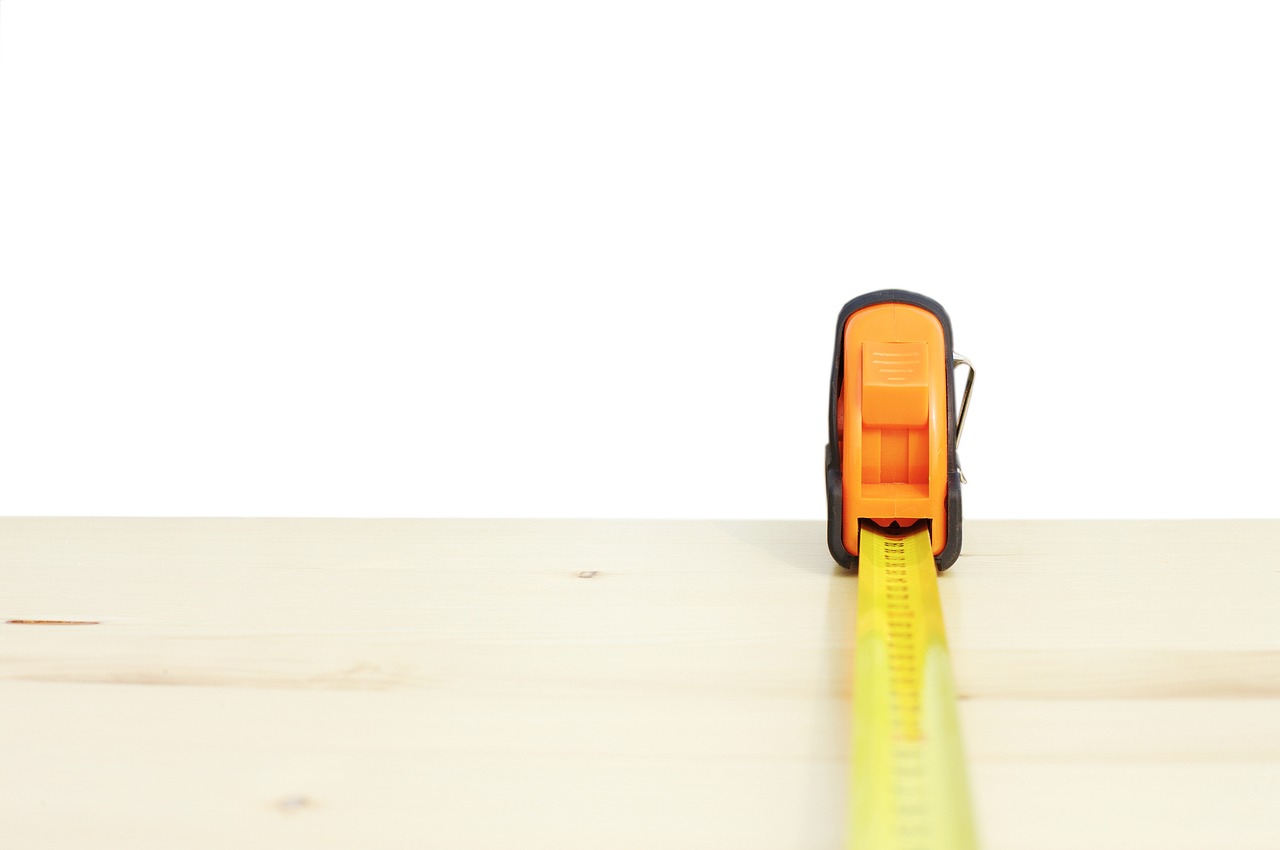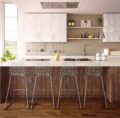In our workshop space, we will outline the simple steps of building wall to wall wood shelves in this tutorial for DIY floating shelves.
The contents of your shopping list will change based on the width of your shelves, however, we purchased the following items for four wall-to-wall, do-it-yourself floating shelves that are each 6 feet wide.
To start with, we dedicated a minute to finding the studs behind our drywall. It is always beneficial to have Jack’s involvement as well.
In order to guarantee the strength of our shelves, we had to construct a hidden support system beneath the plywood sheets. We sliced the 2x4s to match the widths of our wall, using two for each shelf. Additionally, we made 14″ cuts from the remaining 2x4s to create a ladder-like support structure, resulting in 7 supports placed end to end.
In order to save time and eliminate the need for pocket holes, we opted to utilize 2.5″ wood screws for constructing three sides of our internal structure, ensuring that there was approximately 12″ of space between each support. It is important to measure each shelf independently since drywall is seldom perfectly square. For instance, there were slight variations of about 1/2″ in some of our wall widths. The accuracy of your cuts will greatly impact the final result, so strive to be as precise as possible.
We connected our ladder support system to the wall by inserting two 4″ screws into each stud. At this stage, we relied heavily on the level to ensure accuracy. The inexpensive 2x4s we used had slight twists in the wood, which required a little force and careful leveling to properly secure the support. For the studs located on the left and right sides of the main wall, we utilized a right angle drill adapter, although it was a tight fit.
Next, we attached the remaining 2×4 to the front using screws. Once again, we carefully ensured that it was perfectly leveled.
We proceeded upwards on the wall, ensuring that there were variations in shelf heights. We began with a height of 18 inches at the bottom, followed by two shelves at 16 inches and one shelf at 14 inches. Rest assured, these shelves are firmly in place.
Our intention was to apply a thin layer of our wall color to the areas where the 2x4s intersect with the wall. This was primarily a precautionary measure, as any flawed cuts in our plywood would ideally merge seamlessly with the wall.
5| ADD PLYWOOD SHEETS TO TOP AND BOTTOM OF SUPPORTS + STAIN
Now, let’s discuss the plywood sheets. At the hardware store, we had all four sheets trimmed into strips measuring 17 inches. This measurement was ideal for covering our ladder supports, considering that each support consists of a 1.5-inch by 2×4-inch piece, a 14-inch support, and another 1.5-inch by 2×4-inch piece totaling 17 inches.
Because of this, we only had to use the circular saw specifically for cutting down the 6′ widths. The edges received a slight sanding and we applied the Special Walnut stain to everything. After preparing the plywood, we utilized a mallet to assist in placing the boards at the top and bottom, and we used a nail gun to secure the sheets along the ladder support.
6| ADD THE FRONT FACE TO THE SHELVING + STAIN
With all the necessary components in order, each shelf had a precise height of 4 inches. While originally intending to utilize the remaining 1/4-inch plywood to construct false fronts, we concluded that considering the effort already invested in these shelves, we should maximize their value. Consequently, we acquired 1×6 aspen planks, cut them to a width of 4 inches using a table saw, applied stain, and ultimately attached them using a nail gun. The outcome was undeniably advantageous.
7| ENJOY!
We have a great affection for you all! The project exceeded our expectations, and we even playfully remarked that you were overly kind for the workshop! Nonetheless, our main intention was to create something exceptionally sturdy (confirmed!) and long-lasting (confirmed!), and we eagerly look forward to filling them.
5 Benefits of Wood Home Decor
1. Wood furniture is durable.
Destroying wood furniture is difficult due to the Janka hardness test, which ranks wood based on its hardness. Brazilian walnut and Brazilian teak are among the hardest wood species and are frequently used for furniture and flooring. They are particularly suitable for households with high activity levels involving families, children, and pets.
2. Furniture made from wood is well-crafted.
Furniture made from solid wood construction materials tends to have a higher cost than options made from particleboard, MDF, plywood, or with many veneers. The reason for this is the high quality of the wooden furniture.
Despite being more expensive, wood décor is a worthwhile investment due to its durability and longevity. Wood furniture is skillfully crafted and built to withstand heavy use over time. By purchasing wood furniture, you are enhancing your home with a high-quality item.
3. Wood décor is easily stylish.
Do you not pay attention to current trends? Trends often change rapidly, but wooden furniture and decor pieces tend to remain timeless. Regardless of trends, wooden furniture can be handed down from one generation to the next.
No matter if it’s a set of wood coasters with a rustic look, a clock made from a slice of log, or a contemporary wooden alarm clock, there’s no need to over-complicate these items. They are timeless, stylish, and can effortlessly blend with any existing decor. You can even refer to them by a special term: Vintage.
4. Wood is sustainable.
Wood is considered to be one of the most abundant energy sources that can be naturally replenished, and it is unlikely that we will face a shortage of it in the near future. Additionally, wood has the ability to absorb carbon dioxide and is widely recognized as a “carbon store.” This implies that for each meter of wood utilized in building structures, one ton of carbon dioxide is effectively eliminated from the atmosphere.
There are several eco-friendly advantages associated with using wood as home decor.
- Renewable, Recyclable, Natural. Timber is one of the few natural, renewable building materials
- Carbon Positive
- Low Energy Production
- Health and Wellbeing
- Fire Performance
- Natural Insulation
5. Wood décor is versatile.
Wood decor serves both functional and aesthetic purposes. For instance, a retro coffee grinder can serve as a decorative piece for your kitchen or dining room while also grinding your coffee. If you prefer wine, a heart-shaped wine rack can add a charming touch to your wine bar.
Whether your home has a modern or rustic style, wooden decor can enhance the overall look. Lighter woods and organic shapes are ideal for creating a rustic atmosphere that highlights the essence of nature. Conversely, if you prefer a modern aesthetic, darker woods and furniture with stained wood finishes would suit your taste better.




